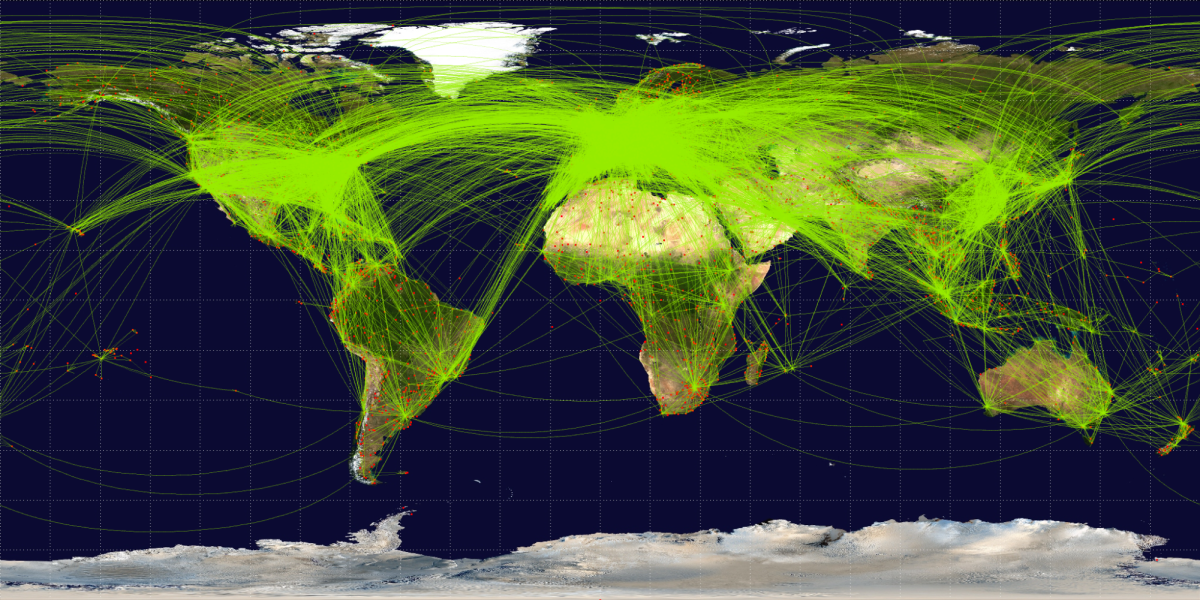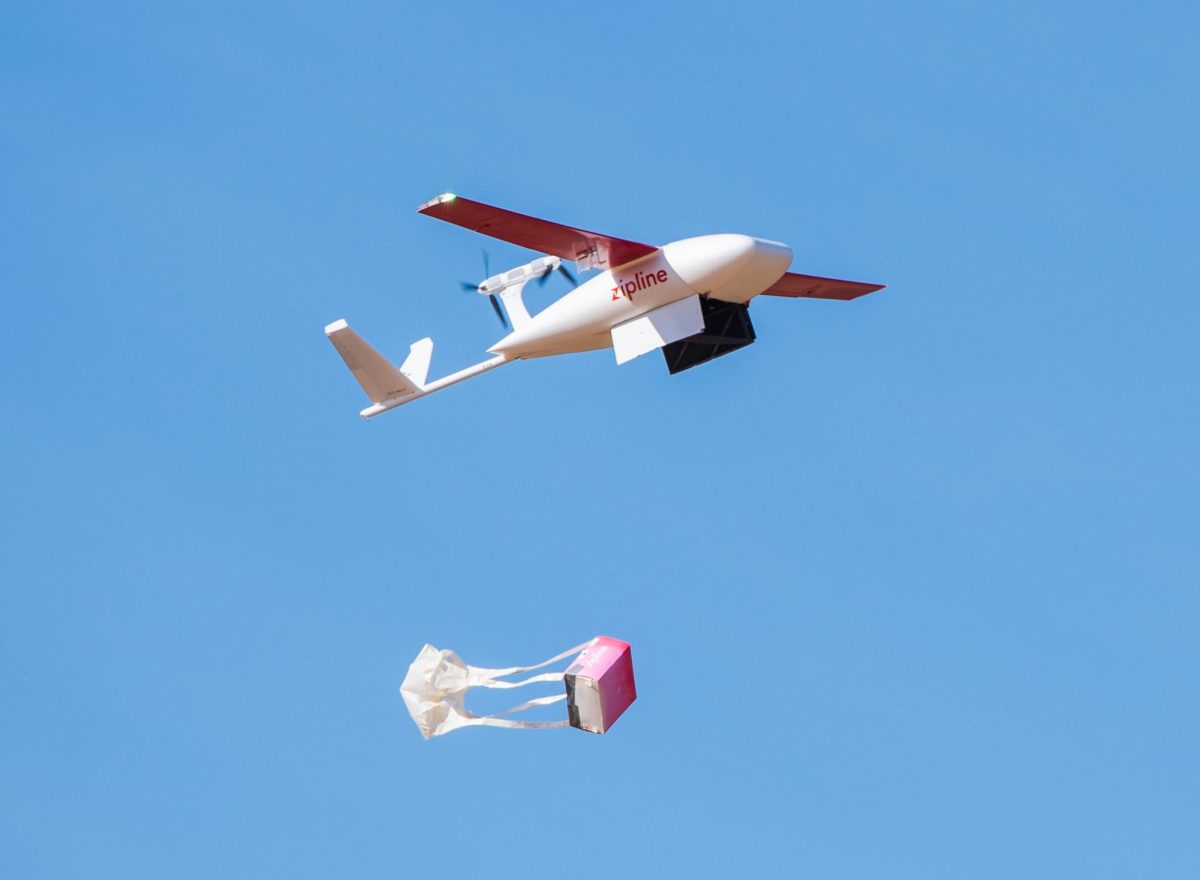Today, planes fly all around the world at all times, this is because once you’re in the air you don’t have to worry about hills, traffic, stop signs, or school kids crossing the street. With the invention of planes, people can fly anywhere in a matter. This also helped tourism and international trade, different cultures were shared from all around the world. Airplanes can also be used by geologists or biologists and others to help them discover new things from new places that people usually don’t see most likely because of their climate. Airplanes can be used for scientific research and help figure out wildlife conservation tactics for endangered species, Airplanes can also help discover new species in general. They can help to research secret places and find environmental changes from above.
Despite the countless benefits to air travel, it’s not all sunshine and rainbows when talking about them. More and more planes are being created every year and noise pollution and CO2 pollution are only getting worse and it’s heating our planet and melting out glaciers. Researchers are looking for alternatives to limiting the carbon footprint that’s left in the atmosphere and are looking for alternative fuel sources to make planes greenhouse emission-free, like electric cars. The World Wars have impacted the growth of planes, becoming a big part in fighting wars like fighter jets or bomber planes. It’s said that whoever has the finer technology usually is better at most skills than the opponent. These skills include: looking for enemy bases or places to settle down, delivering payloads, delivering paratroopers, and shooting other enemies, including Kamikaze pilots who sacrificed themselves to help win a battle or war.
The ability to fly lit a spark of hope and inspiration in scientists who wished to gain space travel. Wernher von Braun, an American aerospace engineer and the creator of the v2 rocket. Wernher von Braun was the creator behind the ideas of the Apollo space missions and the mastermind behind it, he studied aeronautics with a dream to one day reach the stars. Mail used to travel by train, car, bike, and even by foot, with the existence of airplanes a new mail transportation service was created in 1918 with faster mailing times, and back in those times communication was still written through letters.
Imagine going through your last bag of oranges in the late 1800s to early 1900s and not being able to get any fresh produce for months until they came back into season multiple months later, then, many years from now you’re buying fresh oranges or bananas, or whatever is currently not in season and now you’re buying it in the grocery store for just a higher price (Depends on where you live). You see, Aerial transportation has made it possible to get fresh produce and other fruits and vegetables that are currently out of season and are able to be delivered straight to your local grocery store. This doesn’t just include fruits and vegetables, this includes seafood, avocados, and more food only found in specific places.
In 1903 the first successful flight happened on December 17th near Kitty Hawk in North Carolina. It was created by Wilbur and Orville Wright and it was recorded by the Fédération Aéronautique Internationale. The record was said to be the first heavier-than-air-controlled powered flight. The first attempt was pretty simple and at this current date and time, this wasn’t a very impressive one. The first attempt flew for about 12 seconds and only flew 37 meters but that didn’t discourage the brothers. They continued working and in 1905 their third aircraft was created. It was capable of longer and a more controlled flight with bigger fuel tanks and more coolant for prolonged operation. The longest test flight lasted over 39 minutes which is almost 200 times longer than their first ever flight 2 years ago.
The outbreak of WW1 in 1914 led to the hunt for aerial usage and many companies and governments started making aircraft for military purposes to use in the war. The propeller-based technology which was suddenly used by all these companies was suddenly pushed further and made a lot of advancements to be more suitable for more speed and range. Italy was one of the first countries to perform military reconnaissance in the Italian-Turkish War in 1911 as well as during the World War, many countries used newly modified aircraft for bombing, reconnaissance, air-to-air combat, and even photography.
The next major advancement would be into the jet age where planes are going to start looking like the ones we have today. These planes have developed jet engines and production working on jet engines began in the 30s and has been in progress for 9 years now the first working jet plane is the German Heinkel He 178 created in 1939 and then the Messerschmidt Me 262 created for military purposes in 1947. In Britain, Boeing produced the jet-powered B-47 in 1947. The first passenger help aircraft was the de Havilland Comet, created in 1952. Unfortunately, there were some issues with pressurization, windows, and fuselage, and competitors offered better versions without the mistakes from the earlier versions. These successful competitor planes including the DC-8, Vickers VC-10, the Tupolev Tu-104, and the Boeing 707 and the Boeing stood out to be the most successful.
As a quick recap of what WW1 and WW2 did to airplanes, The wars served as stimulants for rapid advancements in Aerial technology for the need for other types of planes such as fighter planes, bombers, and reconnaissance aircraft. The exposure gained during wartime incredibly improved the evolution of aviation leading to more modern planes as we see today. The aviation industry has become the foundation of the global economy promoting international trade, tourism, and different businesses. Airports can be seen as hubs for connection and places to foster economic growth and cultural change. Ensuing in the Wright brother’s footsteps in their aviation journey. Aviation developers worldwide began refining and honing their airplane designs.
The continuous evolution of passenger aircraft has been completed due to the nonstop advancements of the airplane from the beginning to the present. Aircraft designers have been pushing the limits of what is achievable. With each generation becoming more useful, fast, relaxing, safe, and comfortable I know the Aviation industry is trying its best to ensure the people’s safety. Today’s airliners feature impressive airplanes, with complex exploration systems, and the best there can be entertainment systems. As technology continues to evolve, Humanity is only evolving and getting smarter.
Safety has always been the most important concern when looking into the future of the aviation industry. Improved materials, improved security measures, and better communication and navigation systems is just some of the many improvements made to planes to ensure everyone’s safety. Each new generation of planes is designed with safety in mind and airlines and governments have been working together to protect the safety of the crew and passengers.
Conclusion and Summary
Planes have been around for 120 years now and they’ve been through a lot. They were first made in 1903 by the Wright brothers and were able to fly for 39 minutes in their final design in 1906. during WW1 and WW2 they received significant technological advancements for the betterment of the aviation industry and the wars in general. They helped deliver produce and other goods all around the world, they also brought other cultures and resources and helped tourism grow. The first plane with a jet engine was made in 1939 and was called the German Heinkel He 178 and the most successful jet-powered plane is the Boeing 707. Planes quickened travel helped different kinds of scientists study different things and even helped protect endangered species. Safety has always been the number 1 concern in planes. There are some negatives when it comes to planes with greenhouse gas emissions and noise pollution but scientists are planning on fixing that in the future. It even inspired scientists to go to the moon and especially a guy named Wernher von Braun who helped with the Apollo missions. In conclusion, planes has been important to humans for as long as anyone can remember, and without them, our world would be a lot more boring and slower than it is today, and if they weren’t there we wouldn’t be able to experience so many different things.
RELATED STORIES:
https://blog.imodstyle.com/8-incredible-ways-airplanes-have-changed-the-world-as-we-know-it/
https://aerocorner.com/blog/how-airplanes-change-world/
https://simpleflying.com/the-evolution-of-the-airplane/
TAKE ACTION:
- https://www.smithsonianmag.com/air-space-magazine/call-new-world-180977307/
- https://www.nationalgeographic.com/science/article/air-travel-wright-brothers-history
- https://airandspace.si.edu/explore/stories/evolution-commercial-flying-experience
- https://www.britannica.com/technology/history-of-flight
- https://benjaminbarber.org/how-has-the-airplane-changed-the-world/





